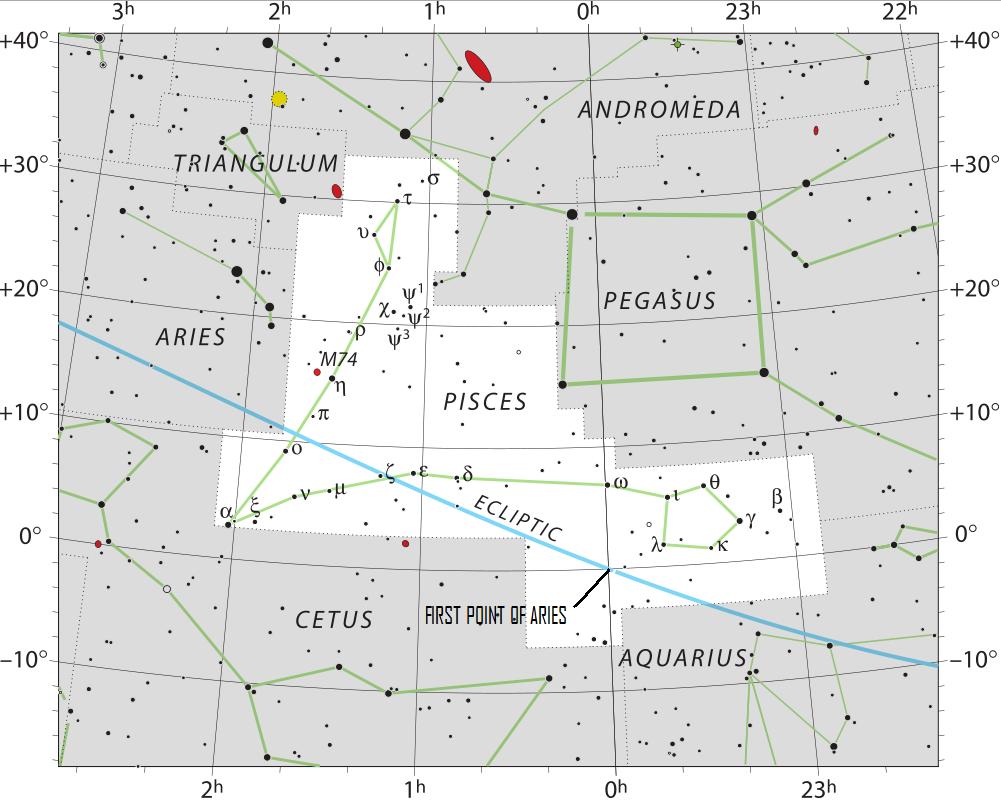Tonight – January 30, 2017 – check out the beautiful, young moon returning to the evening sky. You’ll find it in the west shortly after sunset, just below the brilliant planet Venus. As the sky darkens, you’ll see another “star” pop into view above Venus that isn’t really a star. It’s another planet, Mars.
It’s fun to identify the planets Venus and Mars. And you can also use this waxing crescent moon and these planets to visualize the First Point of Aries on the sky’s dome. On this night, the First Point of Aries is located more or less between Venus and Mars. Check it out on the sky chart above. By the way, the green line depicts the ecliptic – the sun’s annual path in front of the constellations of the zodiac.
The sun crosses both the celestial (or prime) meridian and the celestial equator on the March equinox. The celestial meridian depicts 0 hours of right ascension on the celestial sphere, this semicircle extending all the way from the north celestial pole to the south celestial pole. The celestial equator is a projection of the Earth’s equator onto the celestial sphere. The intersection of the prime celestial meridian with the celestial equator marks the First Point of Aries (0 hours right ascension and 0o declination).
Right ascension on the celestial sphere is the equivalent of longitude here on Earth; and declination on the celestial sphere is the equivalent of latitude here on Earth. The chart below helps to more fully illustrate the First Point of Aries.

To summarize, the First Point of Aries marks the location of the sun – in front of the backdrop stars of the zodiac – on the March equinox. Astronomers consider the First Point of Aries to be the zero point in the imaginary grid on the sky’s dome that helps them define star (and planet) locations.


If you could see the stars in the daytime, you’d see the March equinox sun at the First Point of Aries. It’s not an arbitrary point, but instead marks one of two places on our sky’s dome where the ecliptic intersects the celestial equator on the celestial or stellar sphere. Once again, the ecliptic depicts the sun’s annual path in front the constellations of the zodiac, while the celestial equator is a projection of the Earth’s equator onto the great dome of sky.
In our time, the First Point in Aries lies in front of the constellation Pisces on the March equinox. Look at the chart of the constellation Pisces below to see where the First Point of Aries resides in front of the backdrop stars of the zodiac.
Although they’re not shown on the chart below … on January 30, 2017, both Mars and Venus are in front of Pisces, too.

Bottom line: On January 30, 2017, the waxing crescent moon is below bright Venus in the western sky after sunset. The planet Mars is just above Venus in the west. On this night, if you can identify Venus and Mars, they can be your guide to the first Point of Aries.












